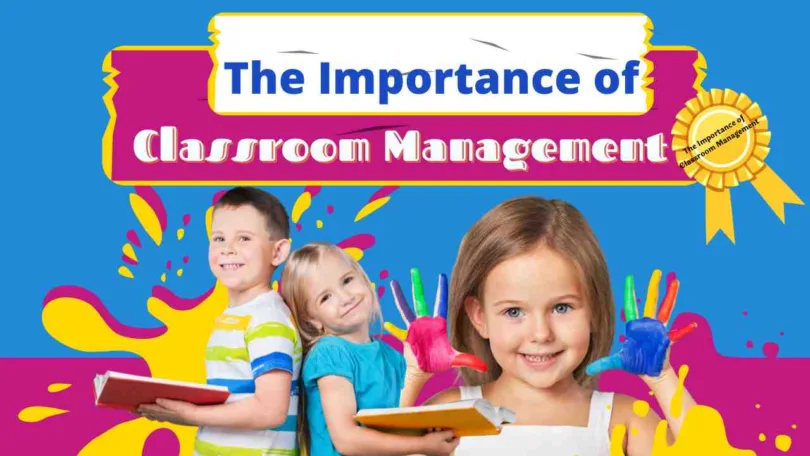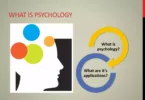There are numerous factors that contribute to the importance of classroom management, but we will focus on a few of them in this post. Achieving successful teaching and learning outcomes requires effective classroom management, which is a basic and essential component. It includes more than just maintaining order; it also involves creating an environment that supports students’ overall well-being, academic achievement, and social and emotional development. This article explores the various facets of classroom management and how they affect learning outcomes.
A multitude of factors combine to create an environment that is conducive to learning. Classroom management is a fundamental component that is frequently overlooked, even though engaging curriculum and pedagogical skills still have a big influence. This seemingly mundane facet, akin to the unseen scaffolding that upholds a grand edifice, plays an indispensable role in orchestrating a productive and enriching learning environment.
Effective classroom management transcends the mere imposition of discipline. It necessitates a delicate dance between establishing order and fostering engaging learning experiences. This intricate choreography involves a multifaceted approach, encompassing:
Clear expectations and routines: Delineating clear expectations and establishing consistent routines provide a framework for students, fostering a sense of security and predictability. This allows them to navigate the learning environment with confidence, directing their mental energy towards academic pursuits rather than deciphering unspoken rules.
Positive reinforcement and relationship building: Fostering positive student-teacher relationships fosters a sense of trust and mutual respect within the classroom. This fertile ground allows educators to leverage positive reinforcement, acknowledge desired behaviors, and create a climate conducive to intrinsic motivation and self-directed learning.
Differentiation and engagement: Recognizing the diverse learning styles and needs within the classroom, educators can employ differentiated instruction strategies. This empowers students to engage meaningfully with the material, fostering a sense of ownership and responsibility for their learning journeys.
The ramifications of effective classroom management extend far beyond the confines of the physical classroom. It lays the groundwork for a symphony of learning to unfold, positively impacting various facets of the educational experience.
Enhanced academic achievement: A well-managed classroom fosters a focused and productive learning environment, allowing students to dedicate their cognitive resources to grasping academic concepts and acquiring essential skills. This translates to improved academic performance and a deeper understanding of the subject matter.
Socio-emotional development: In a nurturing and supportive environment that cultivates effective classroom management, students develop essential socio-emotional skills. They learn collaboration, communication, and conflict resolution, equipping them with valuable tools to navigate not only the academic landscape but also the complexities of personal and professional life.
Positive school climate: When classrooms function as well-oiled machines, the positive energy spills over, contributing to a positive school climate. This fosters a sense of community and belonging among students and staff, further enhancing the overall learning experience for everyone involved.
Introduction to Importance of Classroom Management
Classroom management, often regarded as the art and science of orchestrating a productive learning environment, plays a pivotal role in shaping the educational landscape. It utilizes different strategies, techniques, and practices educators to establish order, promote engagement, and foster positive relationships within the classroom setting. As we embark on this exploration, it becomes apparent that classroom management extends beyond the realm of behavior control; it is a dynamic process that influences every facet of the teaching-learning dynamic.
Creating a Positive Learning Environment
Central to effective classroom management is the creation of a positive learning environment characterized by mutual respect, trust, and collaboration. Setting clear expectations and cultivating a sense of belonging, educators lay the groundwork for academic success and personal growth. Establishing a supportive community where students feel valued and empowered enhances motivation and encourages active participation in the learning process.
Establishing Clear Expectations
One of the cornerstones of effective classroom management is the establishment of clear and consistent expectations. Clearly articulating academic and behavioral expectations, educators provide students with a roadmap for success and empower them to take ownership of their learning journey. Clear expectations serve as a guiding light, fostering a sense of accountability and responsibility among students and ultimately contributing to a positive and productive learning environment.
Building Positive Relationships
At the heart of effective classroom management lies the cultivation of positive relationships between educators and students. Building rapport, demonstrating empathy, and showing genuine interest in students’ well-being not only fosters a sense of connection but also lays the foundation for meaningful learning experiences. Positive relationships catalyze engagement, resilience, and academic achievement, creating a supportive ecosystem where students feel valued, understood, and empowered to reach their full potential.
Fostering a Sense of Community
In addition to individual relationships, classroom management entails fostering a sense of community within the classroom. Nurturing a collaborative and inclusive environment where diversity is celebrated and all voices are heard, educators create a space where students feel safe to take risks, share ideas, and explore new concepts. A strong sense of community promotes peer support, teamwork, and collective problem-solving, enhancing the overall learning experience and contributing to a vibrant and dynamic classroom culture.
Enhancing Student Engagement
Engagement lies at the heart of effective teaching and learning, and classroom management plays a crucial role in fostering active participation and enthusiasm among students. Implementing innovative instructional strategies, leveraging technology, and tapping into students’ interests and passions, educators can ignite a spark of curiosity and fuel a lifelong love for learning.
Implementing Active Learning Strategies
Active learning stands as a cornerstone of effective classroom management, providing students with opportunities to actively engage with course content, collaborate with peers, and apply their knowledge in real-world contexts. Incorporating hands-on activities, group discussions, and problem-solving tasks, educators create dynamic learning experiences that promote critical thinking, creativity, and deep conceptual understanding. Active learning not only enhances retention and transfer of knowledge but also fosters a sense of ownership and autonomy among students, empowering them to become active participants in their learning journey.
Incorporating Varied Instructional Techniques
In today’s diverse classroom settings, one size does not fit all when it comes to instructional techniques. Effective classroom management entails recognizing and embracing the unique learning styles, interests, and preferences of individual students. Utilizing diverse instructional methods like differentiated instruction, cooperative learning, and project-based learning, teachers can address the varied needs of their students, enhancing engagement and promoting equal access to learning opportunities.Embracing flexibility and adaptability, educators create an inclusive learning environment where every student has the opportunity to thrive.
Providing Differentiated Instruction
Central to effective classroom management is the concept of differentiated instruction, which acknowledges the inherent diversity among students and seeks to meet their individual needs through personalized learning experiences. Assessing students’ strengths, interests, and learning preferences, educators can tailor instruction to accommodate varying readiness levels, learning paces, and learning styles. Differentiated instruction promotes inclusivity, equity, and academic success, empowering all students to reach their full potential and achieve mastery of essential concepts and skills.
Promoting Positive Behavior
In addition to fostering engagement, effective classroom management involves promoting positive behavior and creating a culture of respect, responsibility, and accountability. Using proactive strategies, positive reinforcement, and addressing misbehavior with empathy, educators can set clear boundaries and expectations while fostering students’ social-emotional growth.
Utilizing Positive Reinforcement
Positive reinforcement stands as a powerful tool in the arsenal of effective classroom management, providing students with incentives and rewards for demonstrating desired behaviors and achieving academic milestones. Acknowledging and celebrating students’ efforts, progress, and achievements, educators reinforce positive behavior and motivate continued growth and success. Positive reinforcement fosters a culture of positivity, resilience, and self-efficacy, empowering students to take ownership of their learning and strive for excellence.
Addressing Misbehavior Effectively
Despite proactive measures, instances of misbehavior may arise in the classroom, presenting educators with unique challenges and opportunities for growth. Effective classroom management involves addressing misbehavior promptly and constructively, using a combination of preventative strategies, corrective interventions, and restorative practices. Maintaining calm, consistency, and empathy, educators can de-escalate conflicts, reinforce expectations, and guide students toward more positive choices. Addressing misbehavior with dignity and respect not only preserves the integrity of the learning environment but also promotes students’ social-emotional growth and self-regulation skills.
Implementing Restorative Practices
Restorative practices offer a transformative approach to addressing conflicts and repairing harm within the classroom community. Emphasizing accountability, empathy, and reconciliation, restorative practices provide students with opportunities to reflect on their actions, take responsibility for their behavior, and make amends with those affected. Restorative circles, peer mediation, and conflict resolution strategies foster meaningful dialogue, promote understanding, and strengthen relationships, ultimately contributing to a more inclusive and harmonious learning environment.
Maximizing Instructional Time
In today’s fast-paced educational landscape, maximizing instructional time is paramount to achieving academic excellence and meeting the diverse needs of students. Effective classroom management involves optimizing routines, minimizing disruptions, and creating a structured yet flexible learning environment that maximizes opportunities for learning and growth.
Managing Transitions Efficiently
Smooth transitions play a crucial role in maximizing instructional time and maintaining momentum in the classroom. Establishing clear routines, providing visual cues, and offering transition time warnings, educators can minimize downtime and ensure a seamless flow of instruction. Efficient transitions not only maximize instructional time but also promote a sense of order, predictability, and calm within the classroom, creating an optimal learning environment for all students. Smooth transitions between activities are the cornerstone of effective classroom management. They help maximize instructional time, maintain the momentum of learning, and cultivate a positive classroom atmosphere. Dedicating time to establishing clear routines, implementing visual cues, and strategically incorporating transition warnings, educators can ensure a seamless flow throughout the day, minimizing disruptions and fostering a productive learning environment.
Maximized Instructional Time: Smooth transitions ensure minimal downtime between activities, allowing educators to devote more time to actual instruction and student engagement. This translates to a deeper understanding of concepts and enhanced learning outcomes.
Increased Student Engagement: When transitions are predictable and efficient, students spend less time waiting and more time actively learning. This reduces frustration and fosters a sense of control, leading to increased engagement and participation in lessons.
Improved Classroom Climate: Efficient transitions contribute to a calmer and more organized classroom environment. Students feel secure knowing what to expect and how to proceed, fostering a sense of order and reducing potential disruption and conflict.
Minimizing Disruptions
Disruptions, whether internal or external, pose significant challenges to effective classroom management and can derail the learning process if left unchecked. Educators must be vigilant in identifying potential sources of disruption and implementing proactive strategies to address them. Etablishing clear expectations, maintaining consistent routines, and addressing underlying issues promptly and effectively, educators can minimize disruptions and create a focused and productive learning environment where students can thrive.
Optimizing Classroom Routines and Procedures
Central to effective classroom management is the establishment of efficient routines and procedures that streamline day-to-day operations and maximize instructional time. From morning routines to transitions between activities, every aspect of the classroom environment should be thoughtfully designed to minimize downtime and facilitate smooth transitions. Teaching and reinforcing expectations for behavior and participation, educators empower students to take ownership of their learning and contribute to a positive and productive classroom culture.
The importance of classroom management cannot be overstated. As educators, we play a pivotal role in shaping the educational experiences of our students, and effective classroom management lays the foundation for success. Creating a positive learning environment, fostering student engagement, promoting positive behavior, and maximizing instructional time, we can create dynamic and transformative learning experiences that empower students to reach their full potential and thrive in an ever-changing world. As we continue to navigate the complexities of the educational landscape, let us embrace the power of effective classroom management to inspire, motivate, and empower the next generation of learners.
Effective classroom management, often seen as the foundation upon which successful learning is built, transcends mere control and discipline. It is the maestro’s baton that orchestrates a symphony of learning, weaving together diverse elements to create a harmonious and productive educational environment. Its value far exceeds the immediate benefits, fostering not only academic achievement but also crucial socio-emotional development and a positive school climate.
Unveiling the Benefits:
- Maximized Learning Time: A well-managed classroom minimizes disruptions and optimizes instructional time. This allows educators to delve deeper into subject matter, leading to a stronger understanding and improved academic outcomes for students.
- Enhanced Engagement and Motivation: When students feel secure, supported, and respected, their engagement flourishes. Effective classroom management fosters this environment, enabling students to become active participants in their learning journey, intrinsically motivated to explore and discover new knowledge.
- Development of Essential Skills: Beyond academics, well-managed classrooms equip students with vital socio-emotional skills. They learn collaboration, communication, and conflict resolution—tools that empower them to navigate not just the classroom but also the complexities of life.
- Positive School Climate: When classrooms function smoothly and efficiently, the positive energy spills over, fostering a supportive and nurturing school climate. This sense of community and belonging benefits all stakeholders, creating a more welcoming and enriching environment for learning and growth.
The Art of Effective Management:
Mastering the art of classroom management requires a multifaceted approach, encompassing a blend of clear expectations, positive reinforcement, and differentiated instruction.
- Clear Expectations and Routines: Establishing clear expectations and consistent routines provides a predictable framework for students, allowing them to navigate the learning environment with confidence and focus their energy on academic pursuits.
- Positive Reinforcement and Relationship Building: Building positive relationships fosters trust and respect, creating fertile ground for positive reinforcement. Acknowledging and rewarding desired behaviors motivates students and cultivates intrinsic motivation for learning.
- Differentiation: Recognizing the diverse learning styles and needs within the classroom is crucial. Differentiated instruction allows educators to cater to individual needs, ensuring meaningful engagement and fostering a sense of ownership of learning in every student.
Investing in the Future:
Effective classroom management is not simply a matter of convenience; it is an investment in the future of our students. Prioritizing this essential aspect of education, we empower educators to create thriving learning environments where every student has the opportunity to unlock their full potential and embark on a successful learning journey. Remember, a well-managed classroom is not just a quiet space; it is a symphony of learning waiting to be conducted.







[…] Classroom climate and culture: Educational psychology examines the classroom environment, including …, teacher-student relationships, peer interactions, disciplinary practices, and school climate, that influence students’ academic engagement, motivation, and well-being. […]